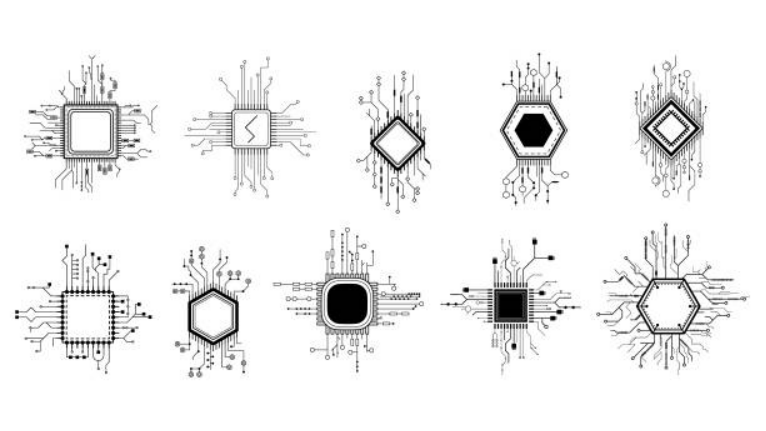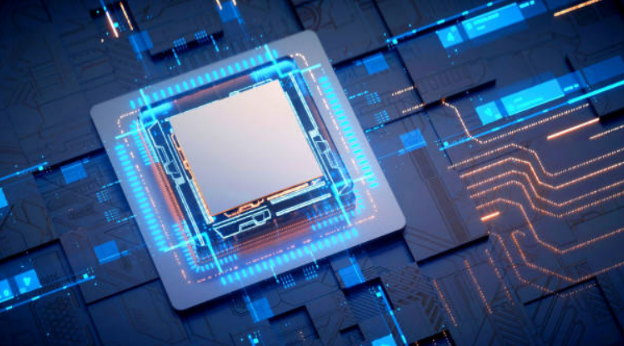Printed circuit boards play a crucial role in electronics today. These boards are made to hold and connect different electronic parts, making it easy and cheap to build electronic devices. This article will focus on 4-layer PCBs used for more complicated electronic devices.
A printed circuit board, or PCB, is an insulating board that holds and connects electronic parts. The conductive paths on these boards are used to connect the different parts of an electronic device.
Printed circuit boards (PCBs) play a decisive role in modern electronics because they make it easy and cheap to build electronic devices. PCBs make it easy to connect electronic parts efficiently and accurately. This can speed up development and make manufacturing cheaper.
A 4-layer PCB is a type of multi-layer PCB with four layers of conductive material separated by layers of material that don't conduct electricity. These layers are used to connect the different parts of an electronic device. They can also be used to make power and ground planes, which can help with signal integrity and noise reduction.
PCBs with four layers are often used in computers, smartphones, and medical devices with many moving parts. When there are a lot of parts to connect and signal quality and noise reduction are very important, these boards are used.
In this article, we shall explore an in-depth guide to the layout, design, and cost of a 4-layer PCB. We will discuss different parts of 4-layer PCBs, such as designing the board, cost factors, design considerations, the manufacturing process, design tools, common design problems, and prototyping and testing.

When making a 4-layer PCB, the first step is to plan the layout design. This means deciding where the different parts will go on the board, where the power and ground planes will go, and how the traces will be routed.
Before making the layout, it's important to know how the electronic device works (called the circuit diagram). The circuit diagram gives a detailed look at all the parts and their connection.
The next step is to decide which parts will go into the electronic device. This means choosing the right resistors, capacitors, transistors, and the right values and specifications.
After choosing the parts, they must be put on the board. The components should be best for signal integrity, noise reduction, and heat management.
After putting the parts on the board, the next step is to find where the signals go. This is done by routing the traces that connect the board's different parts. The traces should be set up to get the best signal quality and the least amount of noise.
The stack-up structure shows how many layers there are and what order they are in. The stack-up structure for a 4-layer PCB usually consists of two signal layers, one power layer, and one ground layer.
The power planes give the different parts on the board a stable voltage source. The power planes should be made to make as little noise as possible and give the components enough power.
The ground planes connect the different parts of the board to the ground in a stable way. The ground planes should be made to make as little noise as possible and to offer

Signal integrity is an important part of PCB design that ensures the signal gets where it needs to go without getting messed up. To ensure the signal's integrity, designers use tools like impedance calculators to figure out the traces' width, spacing, and stack-up.
Another important part of PCB design is power integrity. It means ensuring the power supply reaches all the parts without voltage drops or changes. When designing the power distribution network, the voltage drop, noise, ripple, and transient response must be considered. Using the right techniques for decoupling and filtering can help improve power integrity.
In high-speed digital and RF circuits, controlling the impedance is very important. The impedance of the signal traces and power planes should match that of the source and the load to stop signal reflections and ringing. Controlled impedance routing and differential pair routing are two ways to control impedance that help maintain signal integrity.
Modern PCB designs must follow the rules for electromagnetic interference (EMI) and electromagnetic compatibility (EMC). EMI is the circuit's unwanted radiation or emissions, and EMC is how well the circuit works near other electronic devices. EMI can be reduced, and EMC compliance improved by using proper grounding, shielding, and filtering techniques.
Thermal management is important in PCB designs for power electronics and high-speed processors that produce a lot of heat. Poor thermal management can lead to problems with performance, reliability, and even safety. When making the layout for a PCB, designers have to think about how heat moves, how thermal resistance works, and what the temperature is in the room.
Reliability and the ability to be made are important parts of PCB design. A reliable PCB design should work right in all situations and for a long time. A design for a PCB that can be made should be easy to make, put together, and test. There shouldn't be any flaws in the design that cause manufacturing defects or yield losses.
Testing and verification are very important for a PCB design to work. Using simulation tools, prototypes, and functional testing, designers must check the design to make sure it meets the design requirements and specifications. Tests for signal integrity, power integrity, EMI/EMC compliance, thermal performance, and reliability are all part of functional testing.
Making a PCB includes image transfer, etching, drilling, plating, surface finishing, solder mask, and electrical testing. The process starts with an image transfer, in which a photoresist film puts the circuit pattern on the copper-clad substrate.
The etching process removes the copper that isn't needed, leaving only the pattern of the circuit. Drilling and routing make holes and slots for mounting and routing components. Plating and surface finishing improve the PCB's electrical and mechanical properties.
The solder mask and legend printing protect the copper traces, which also shows where the component goes. Electrical testing ensures that the PCB's electrical performance meets the standards.
PCB design tools are computer programs that help designers make and change designs for printed circuit boards. Altium Designer, Eagle PCB, KiCAD, and OrCAD are all well-known PCB design tools.
Some of the things that these tools can do are capture schematics, edit layouts, manage libraries, check design rules, and show designs in 3D. Designers must pick the right tool based on their design needs, features, licensing options, and price.
PCB designs often have problems like signal crosstalk, ground bounce, power distribution problems, EMI/EMC issues, thermal management problems, manufacturing defects, and troubleshooting and debugging techniques. Designers must find and solve these problems to make a successful PCB design.
A ground bounce happens when a fast switching signal causes the ground plane's voltage to drop. The designer can stop the ground bounce using multiple ground vias, adding a decoupling capacitor, and making the loop area as small as possible.
Power distribution problems: Voltage drops, noise, and inductance can cause problems. The designer can fix problems with power distribution by using more than one power plane, adding bypass capacitors, and making the loop area smaller.
EMI/EMC problems: Improper shielding, ground loops, and antenna effects can cause electromagnetic interference and compatibility problems. EMI/EMC problems can be fixed by adding shielding, a smaller loop area, and using the right grounding techniques.
Problems with thermal management can happen if there isn't enough heat sinking, enough ventilation, or too many components. The designer can solve problems with thermal management by adding thermal vias, heat sinks, fans, and vents.
When designing a four-layer PCB, you must think about more than just performance. You also need to think about reliability and how easy it is to make.
High-quality parts with a proven track record can help reduce the chance of a part failing and make the PCB more reliable overall.
Manufacturability is another important thing to consider since a poorly designed PCB can be hard or expensive. PCB designers should ensure that the board's layout is optimized for the manufacturing process. This means that the board should have the right clearances, trace widths, and other design parameters to make it easier.
Testing can help find any problems or flaws in the design that might have been missed during the design phase. It can also help make sure that the board works as expected.
Visual inspection can help find any obvious problems with the board, and electrical testing can help ensure that all connections and parts are working properly. Functional testing involves putting the board through its paces in the real world to ensure it works as expected.
In conclusion, making a 4-layer PCB requires careful thought about many things, such as the layout design, the choice of components, the cost, design considerations, the manufacturing process, testing, and more. By following best practices and considering all of these things, designers can make high-performing, reliable, and cost-effective PCBs for their applications.
By continuing to use the site you agree to our privacy policy Terms and Conditions.
Recruit global agents and distributors Join us